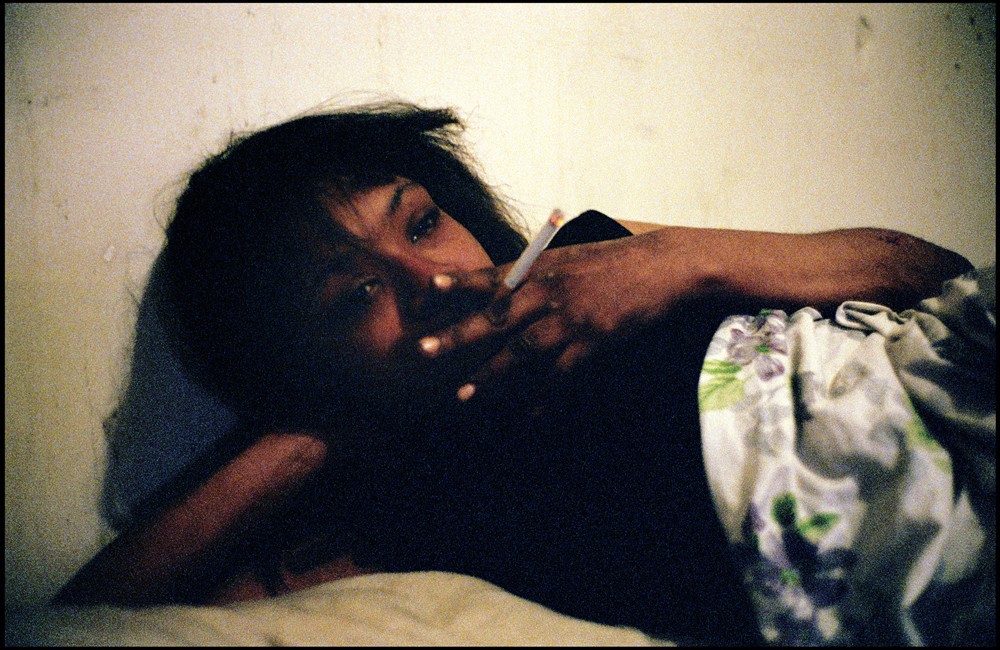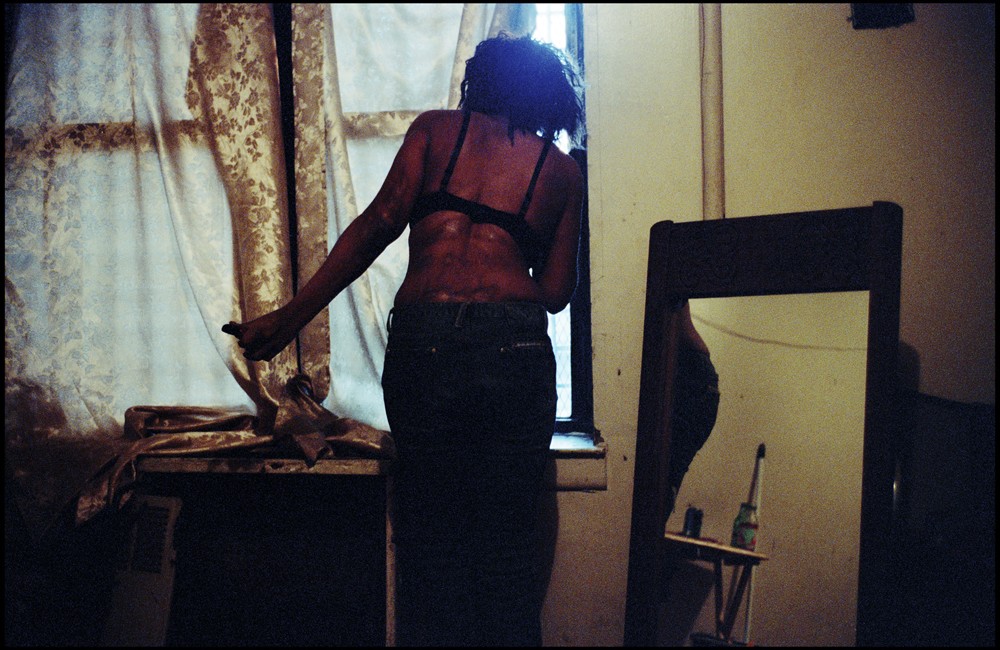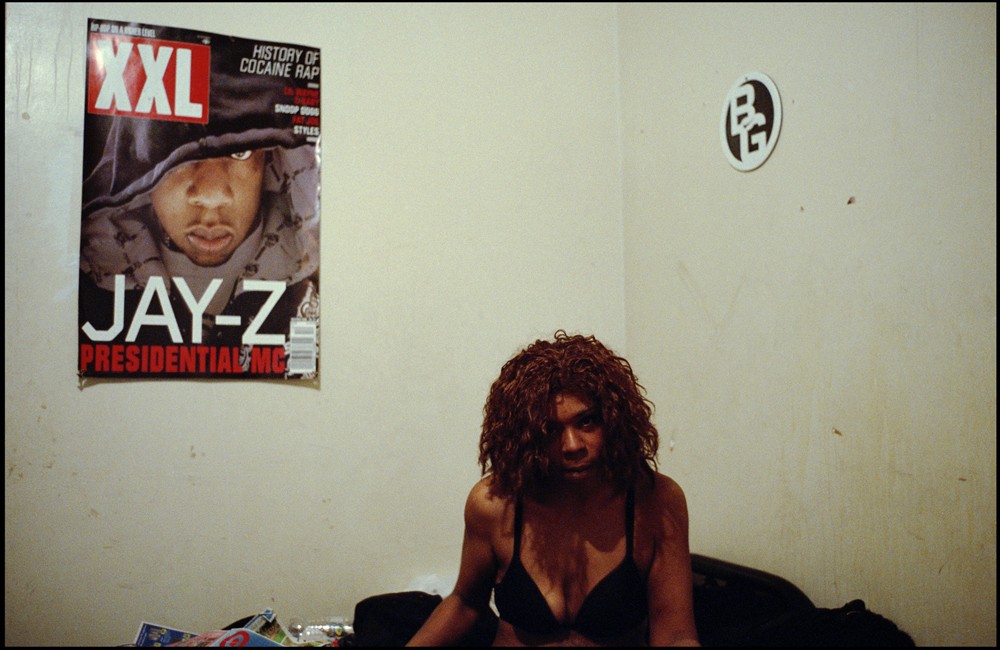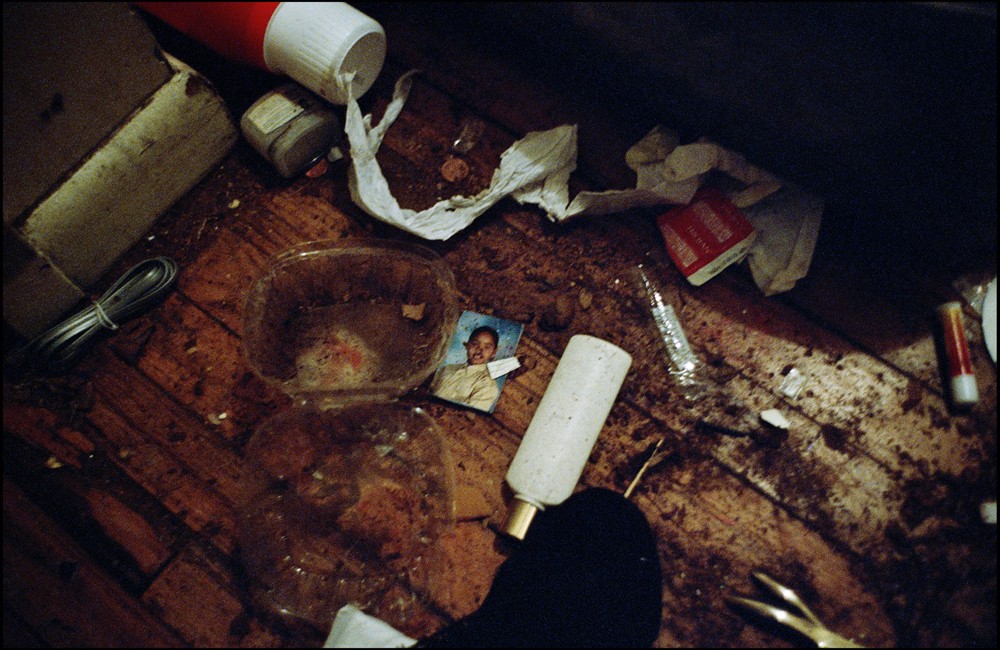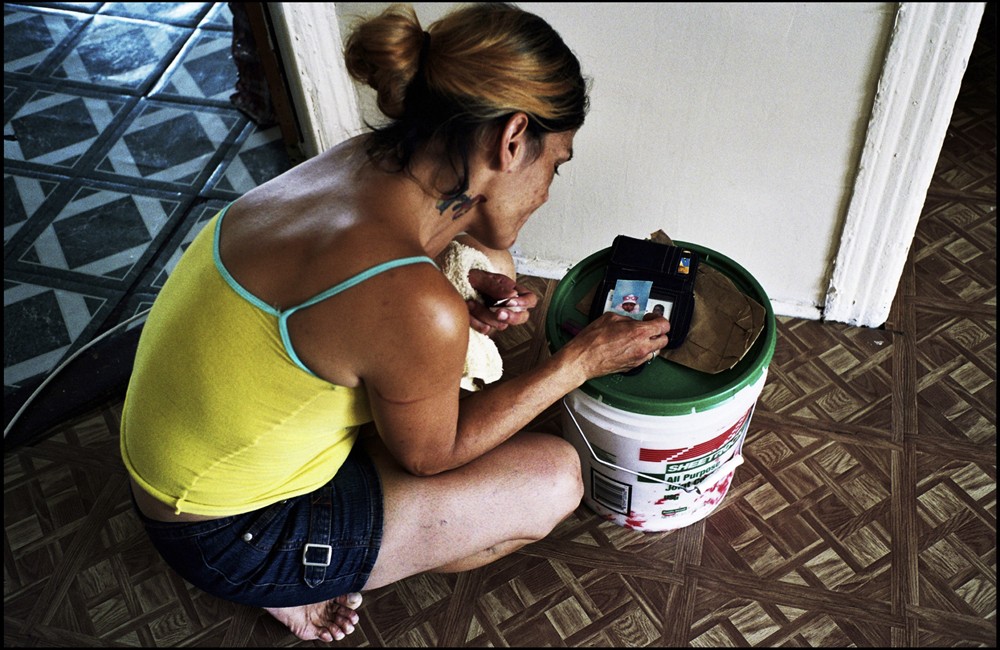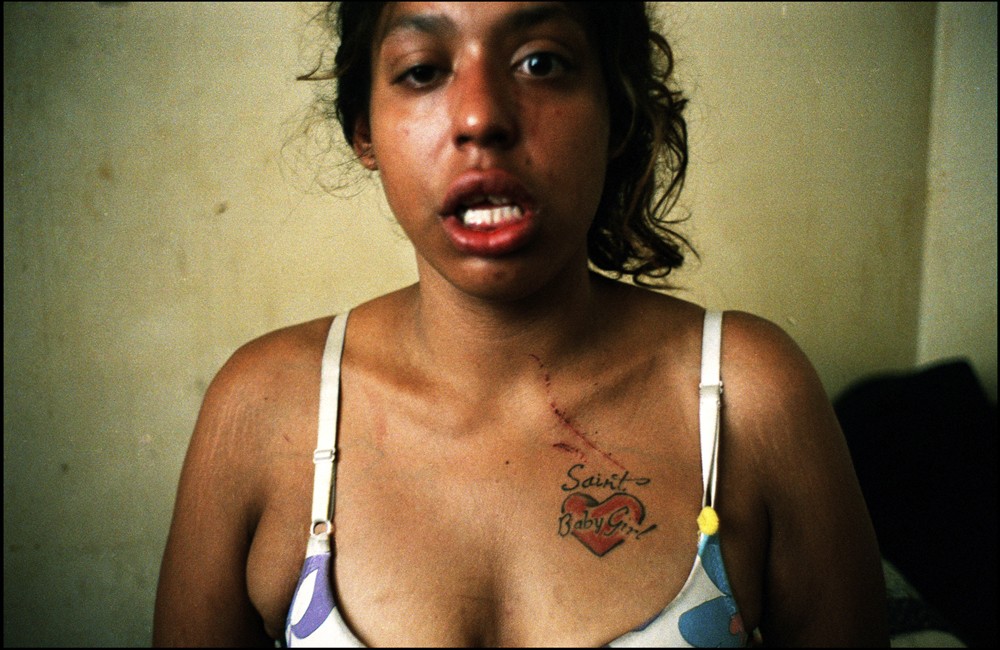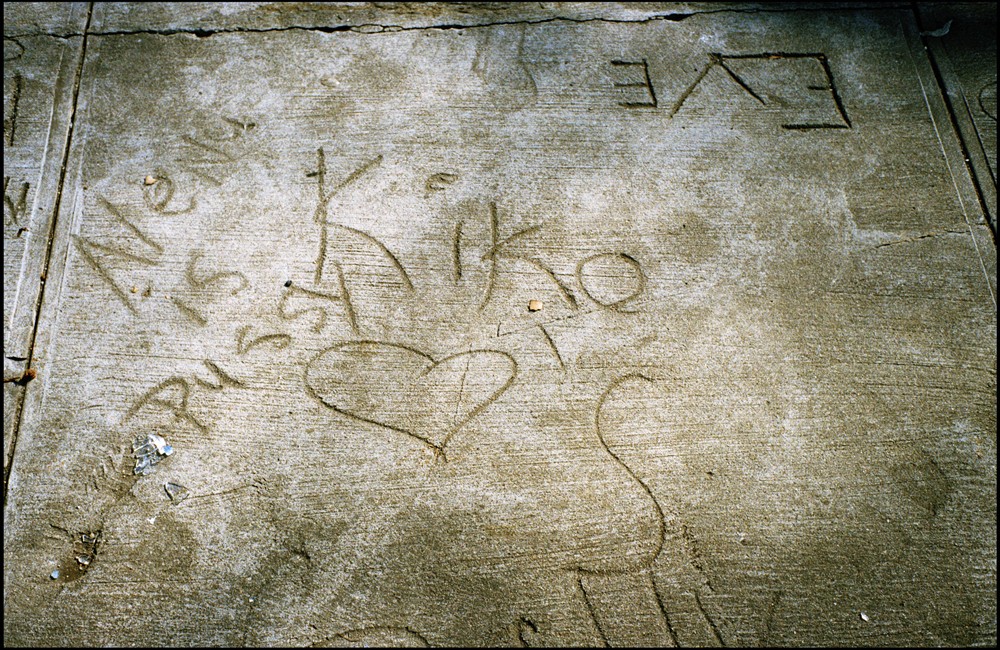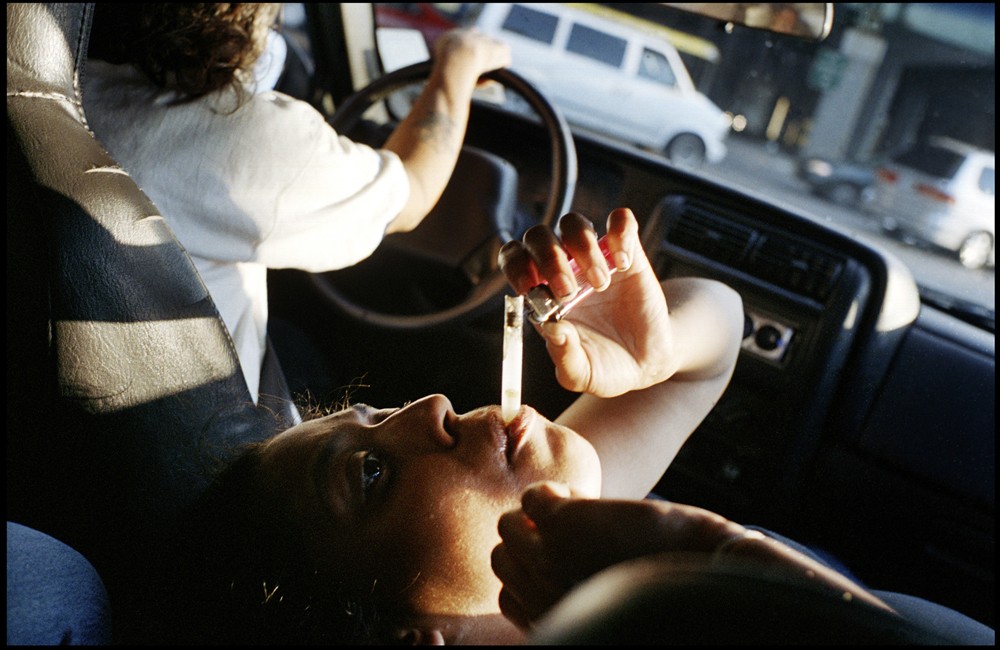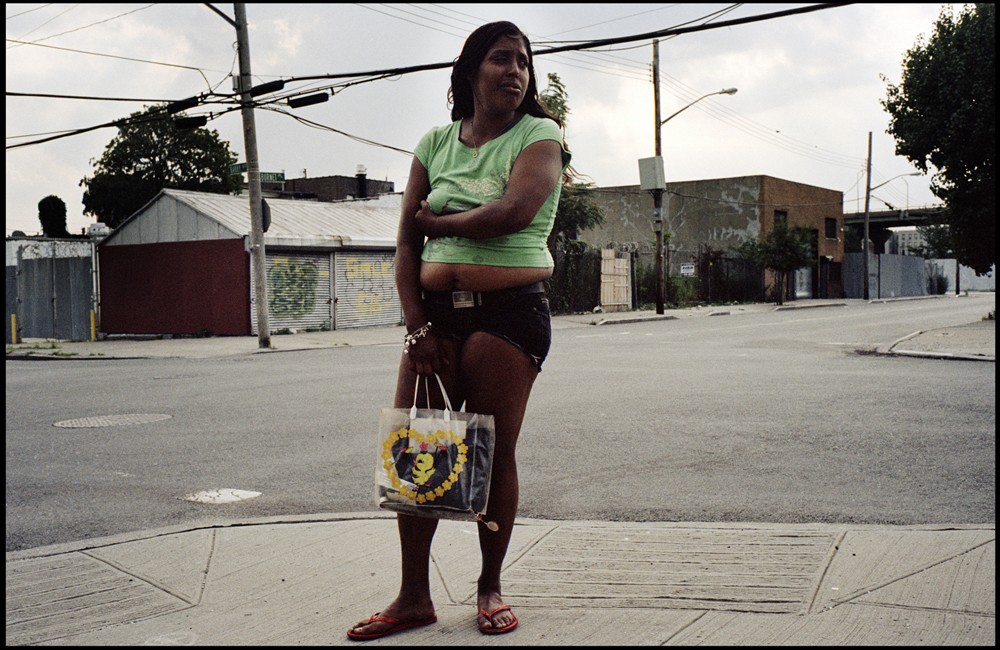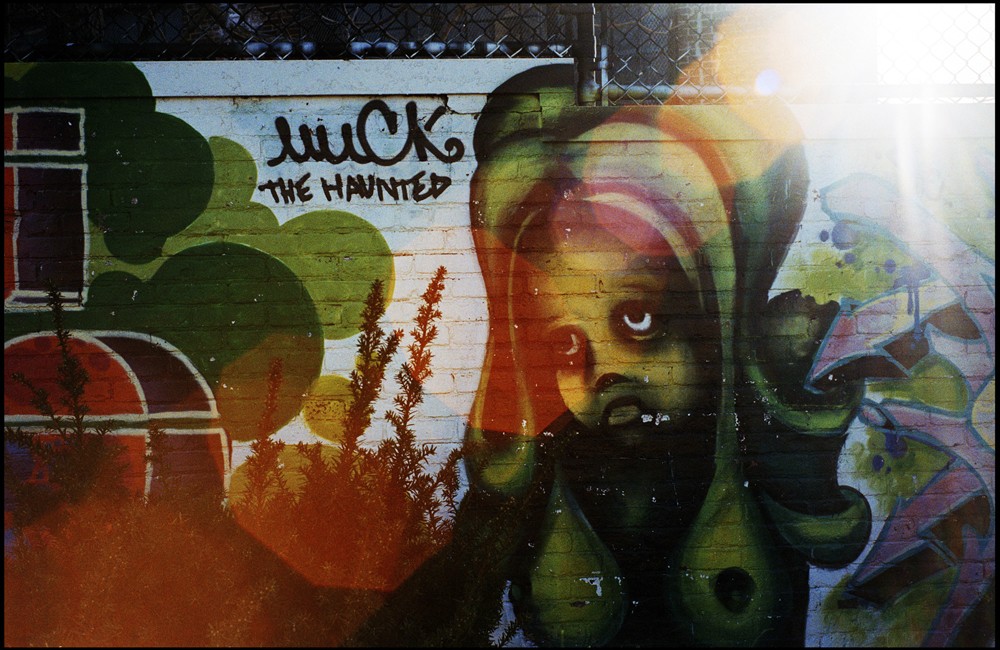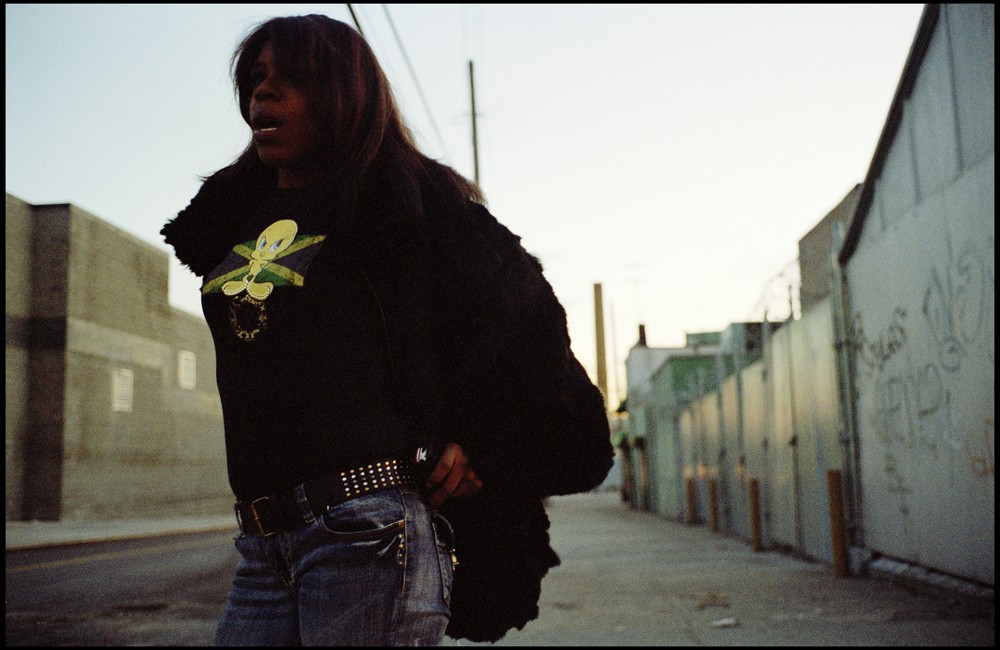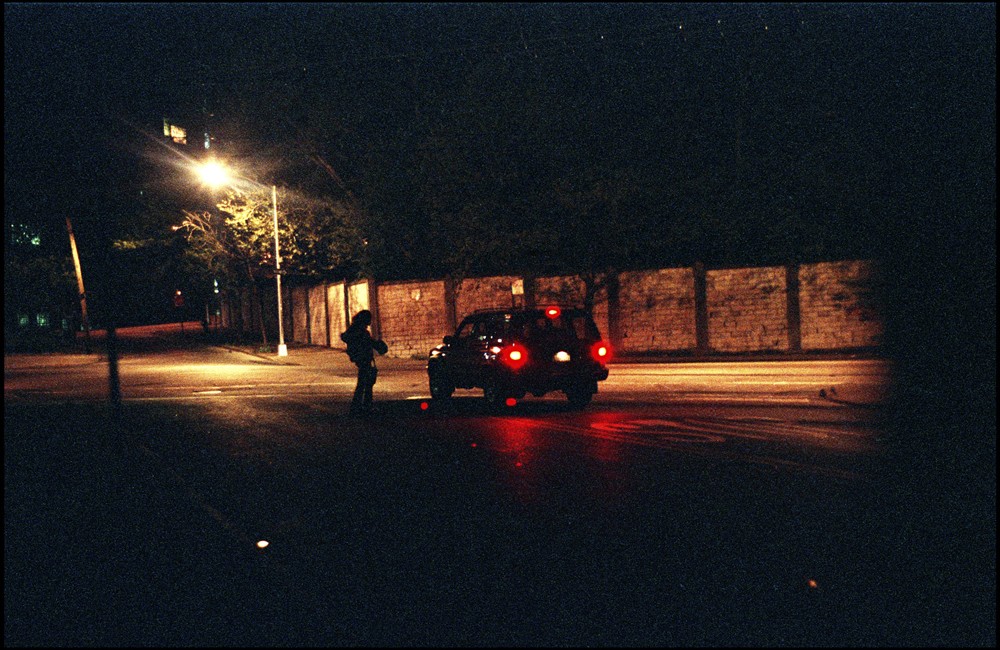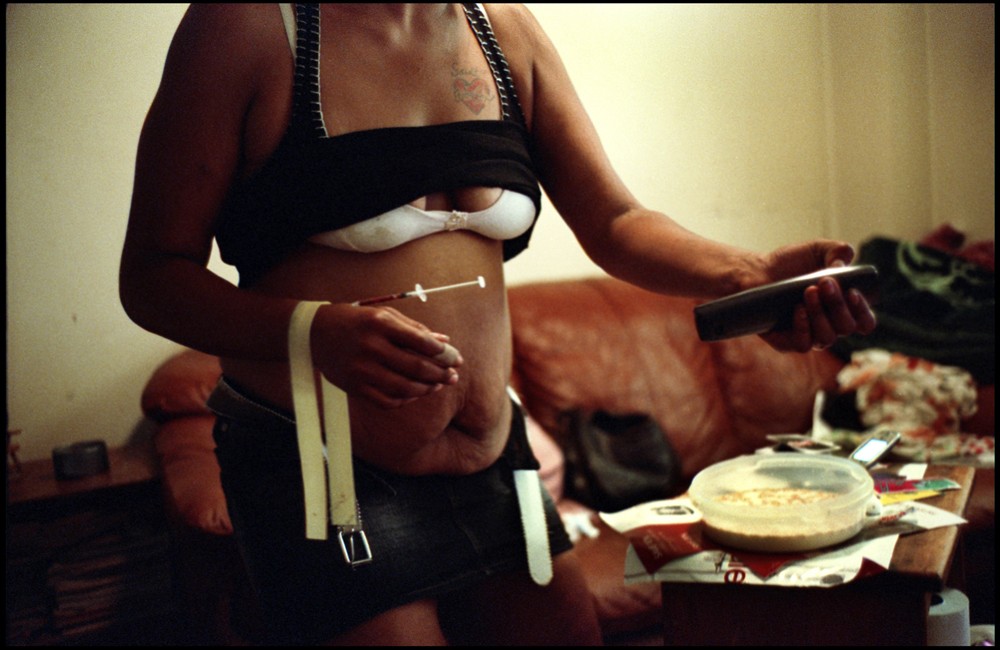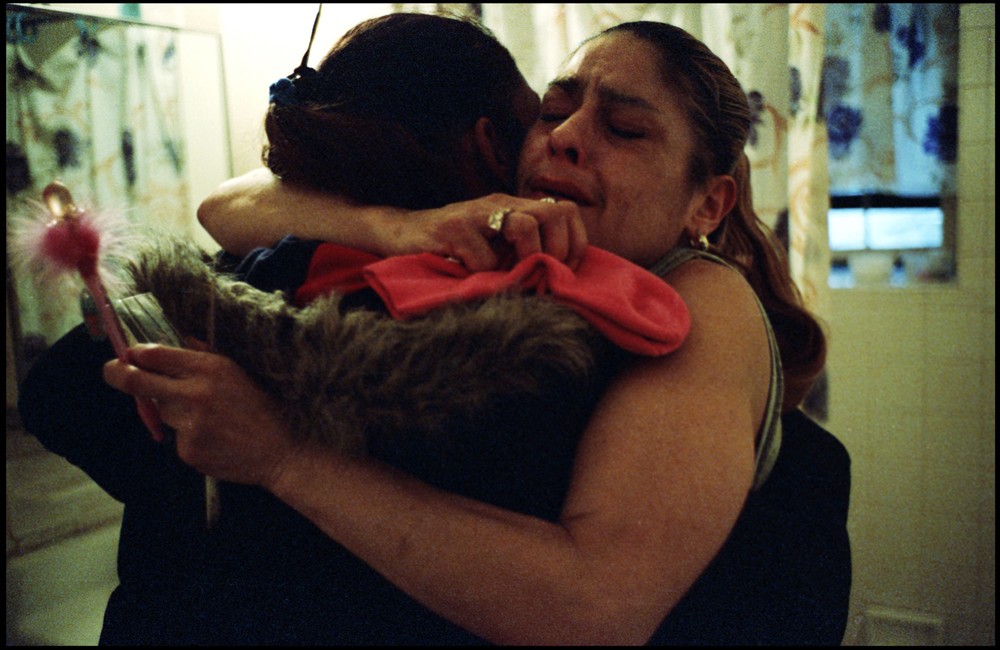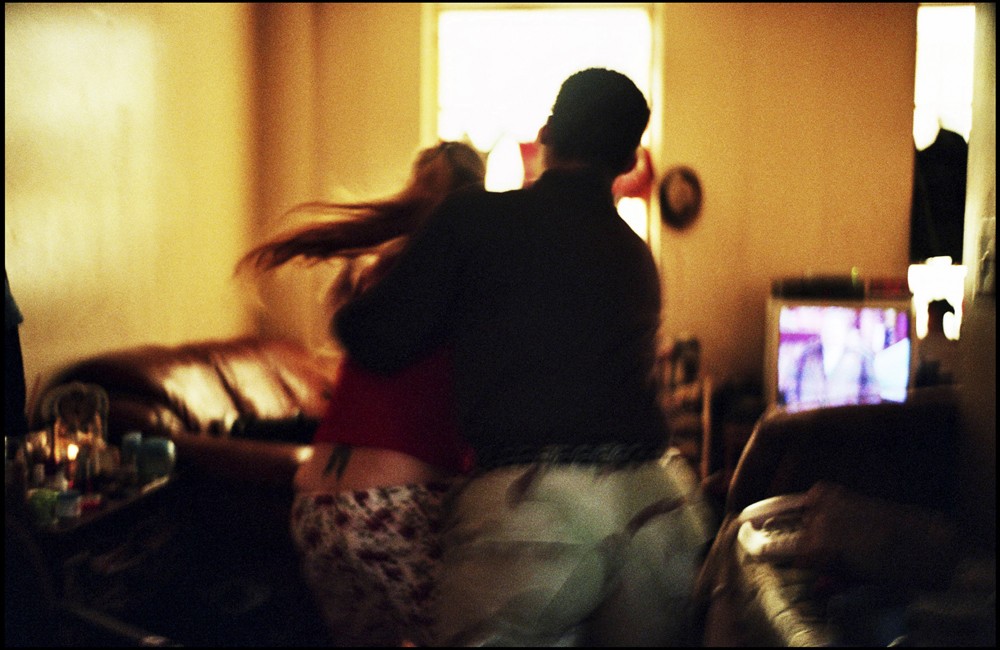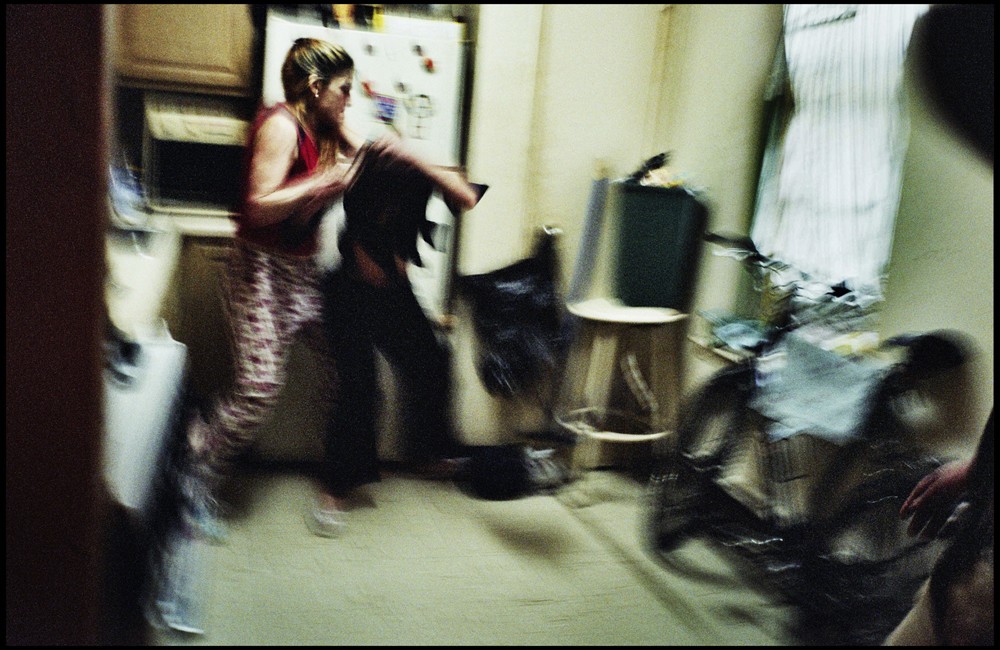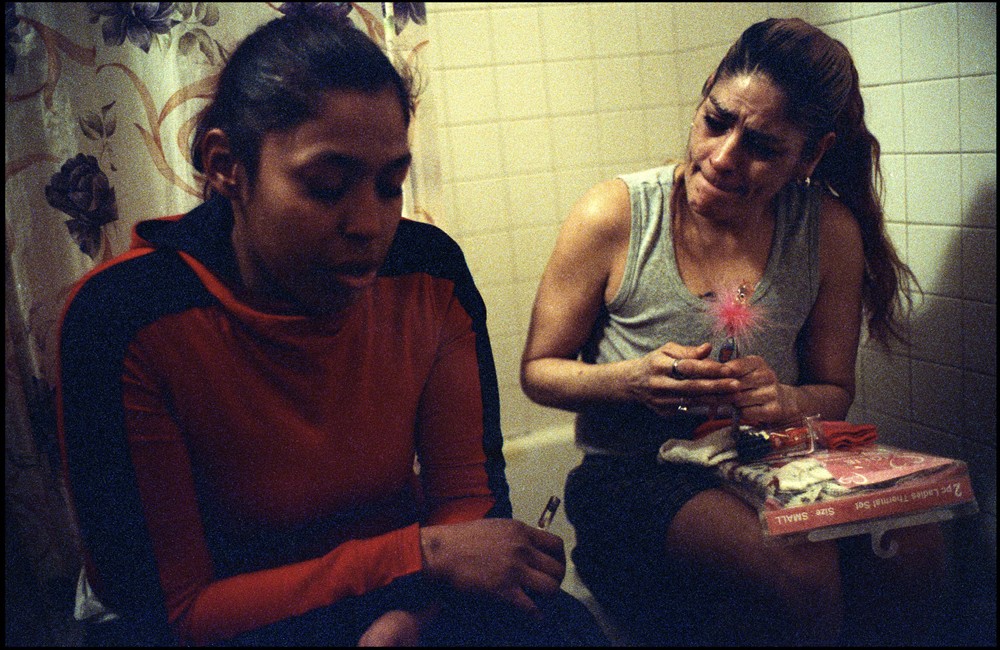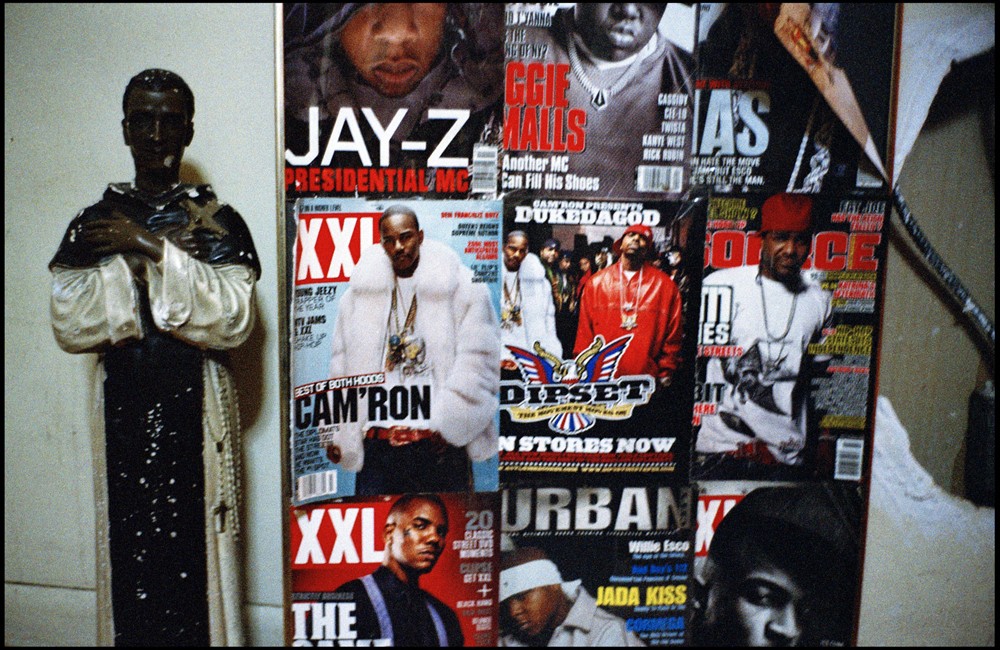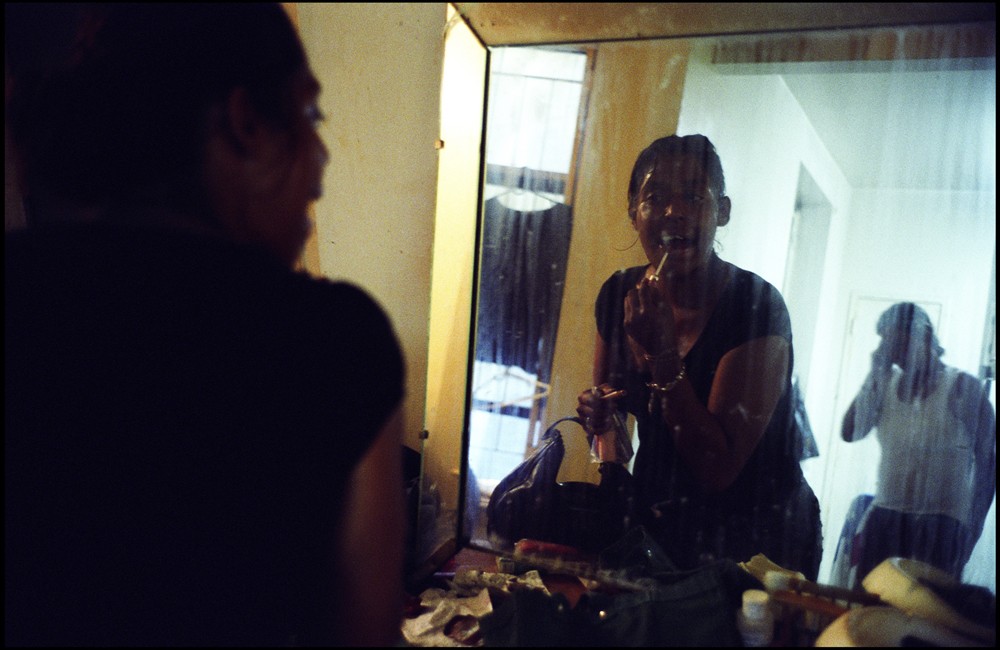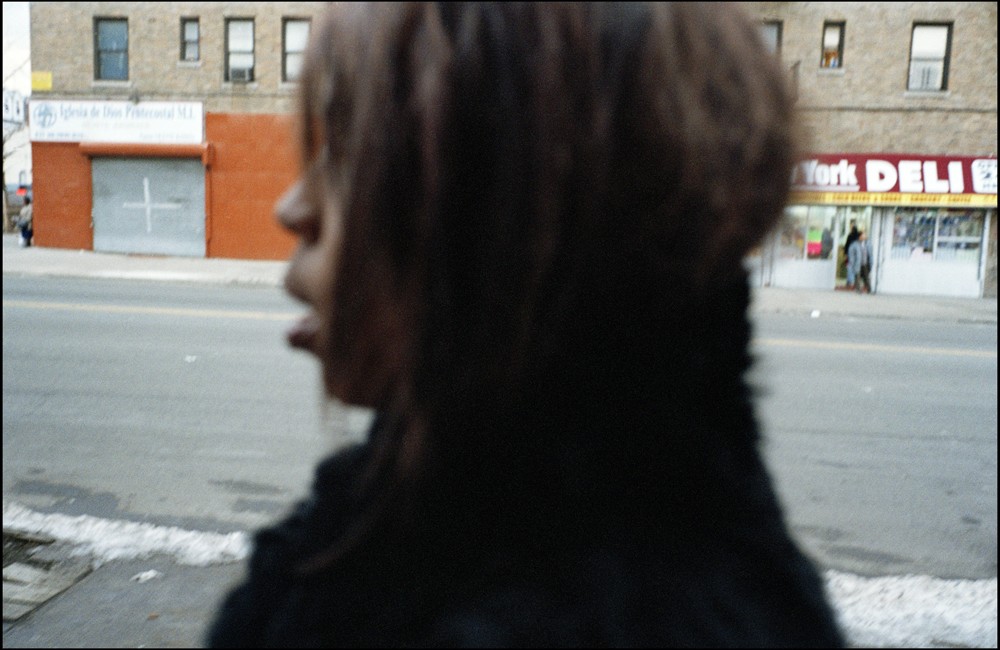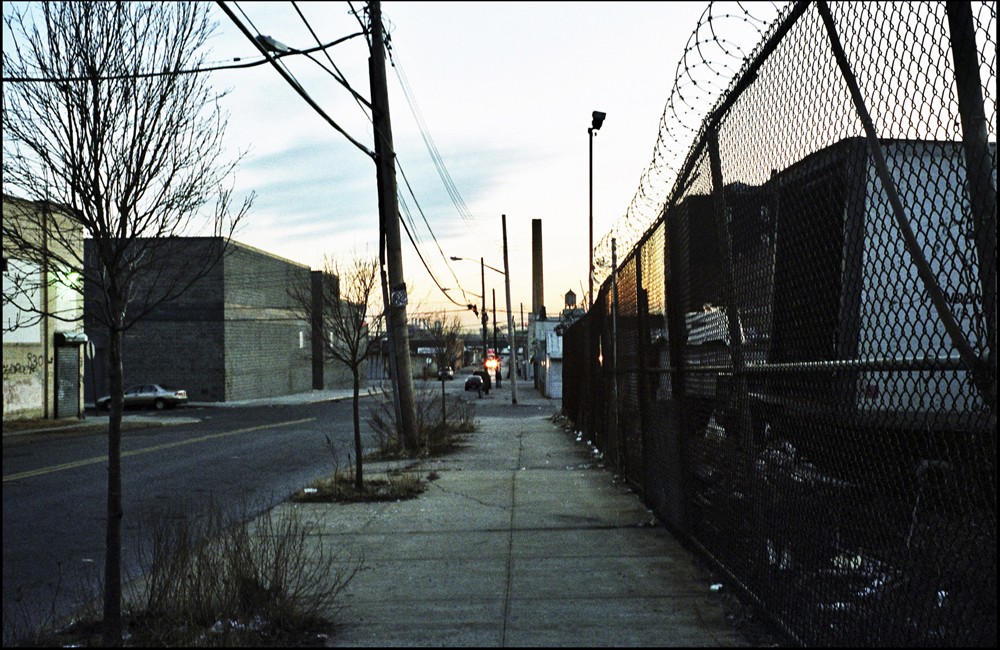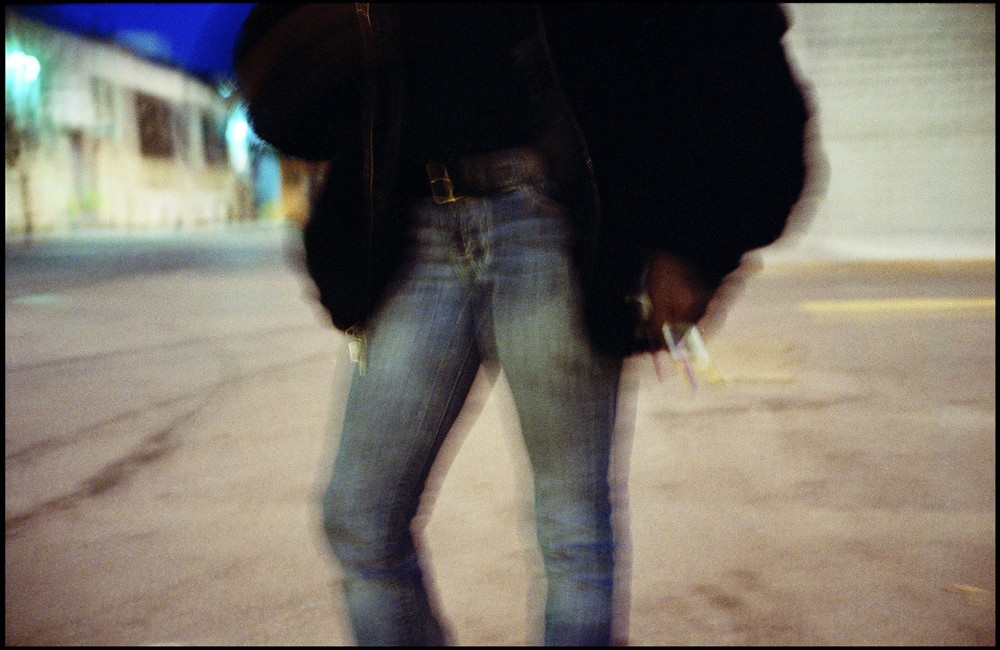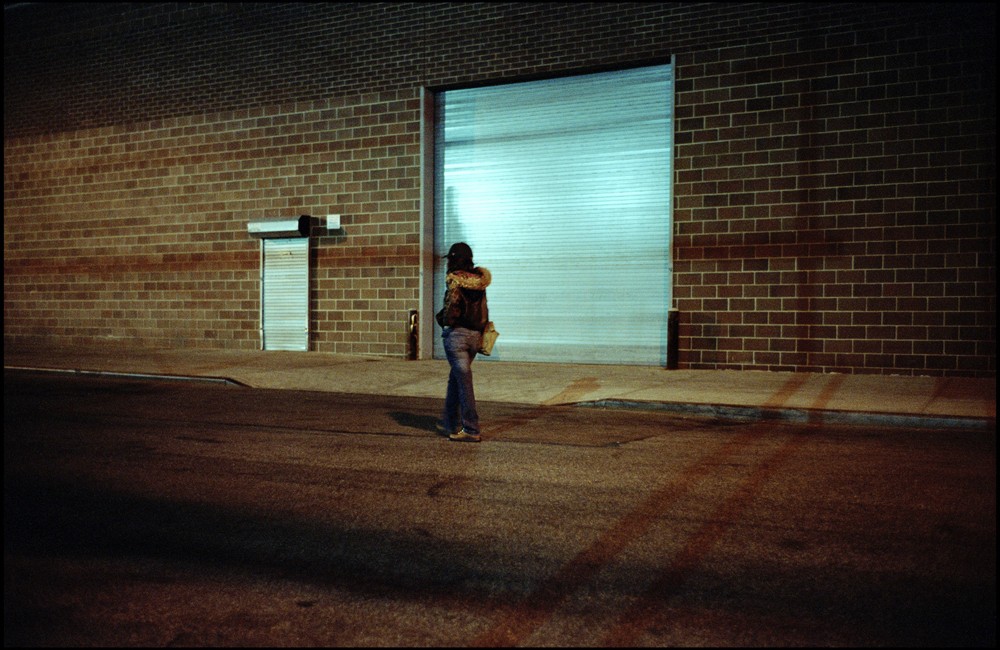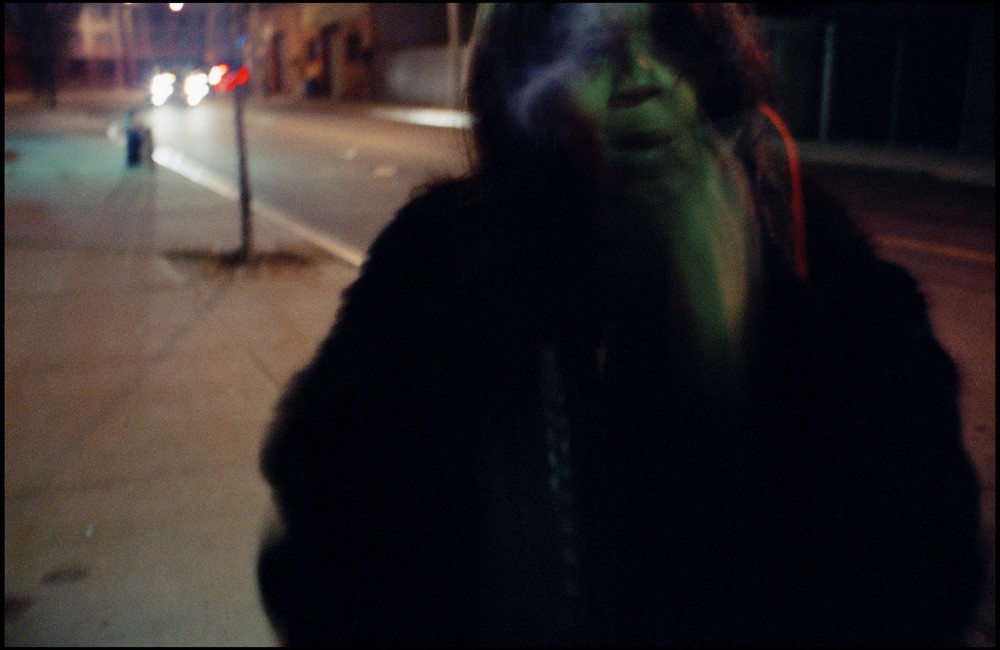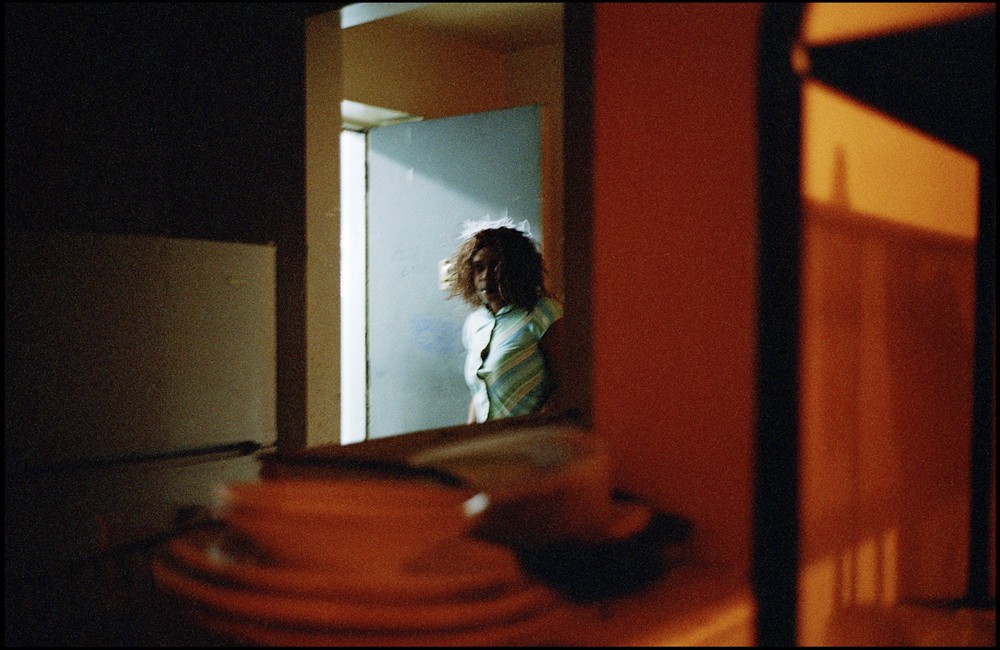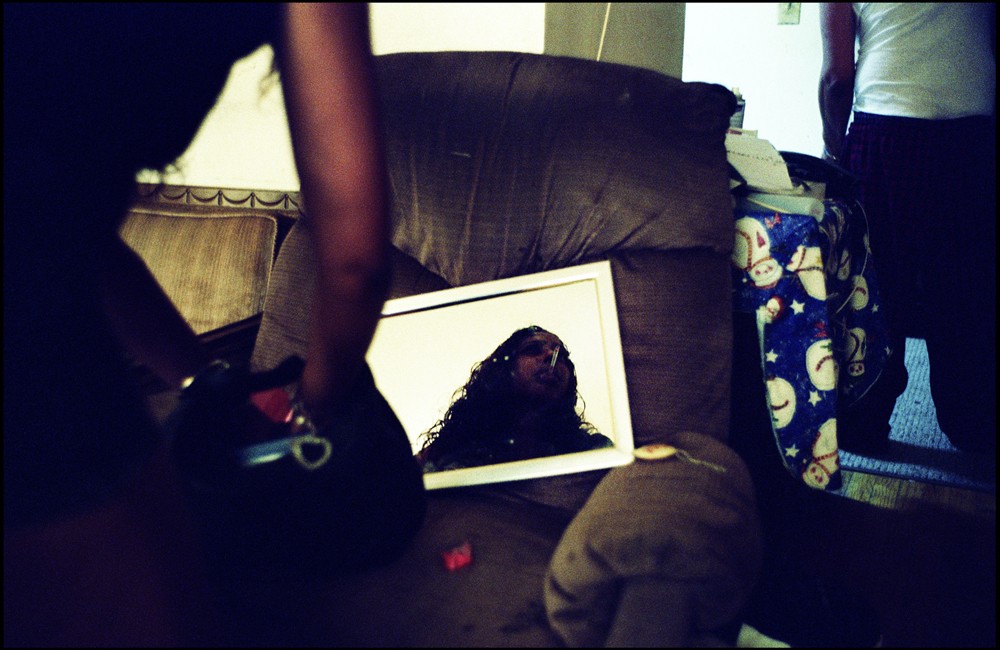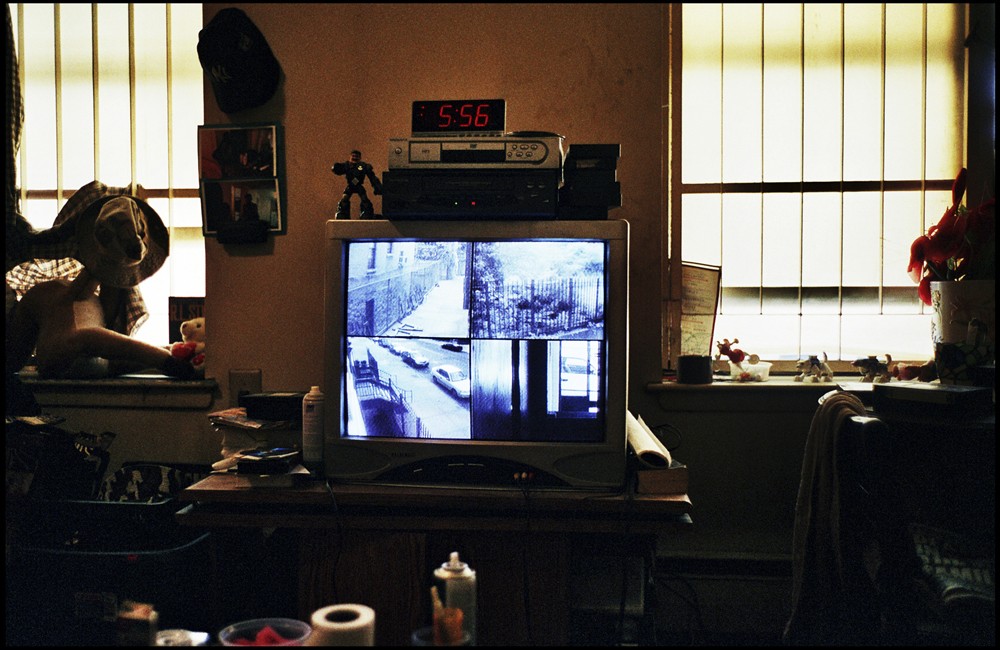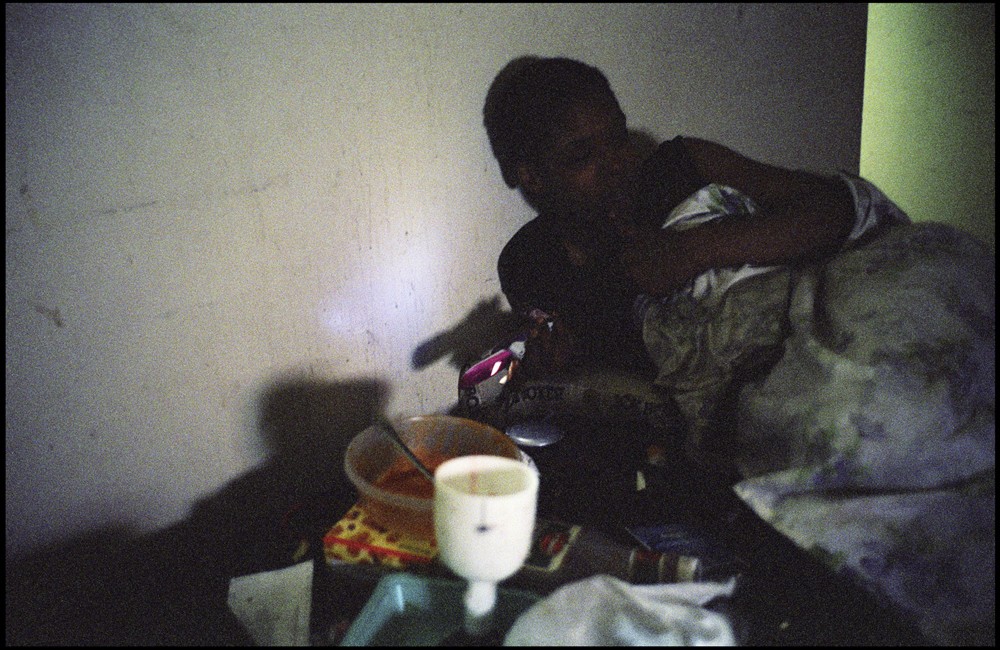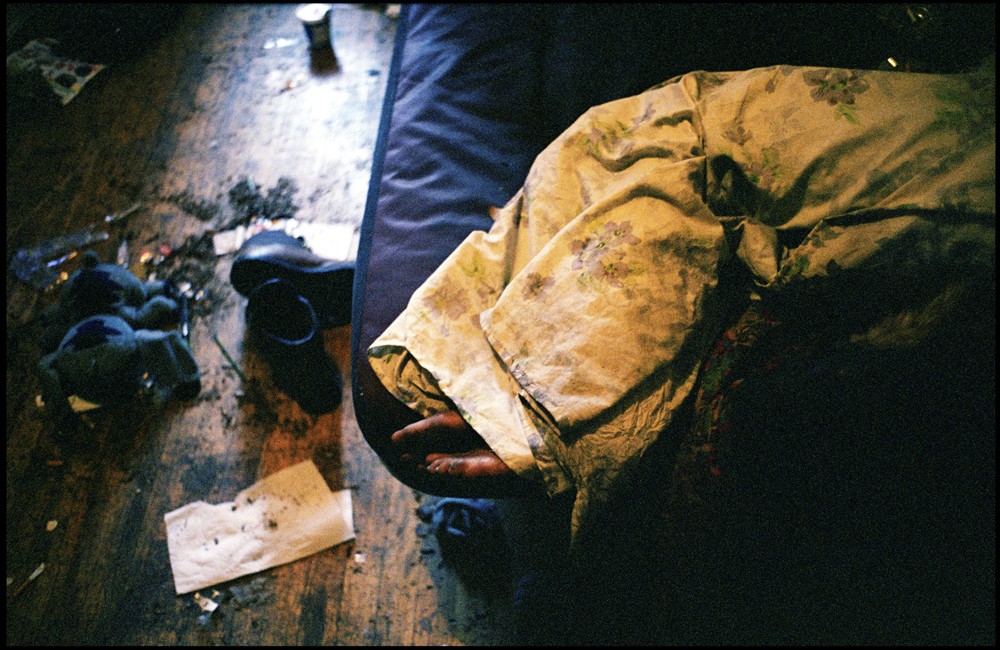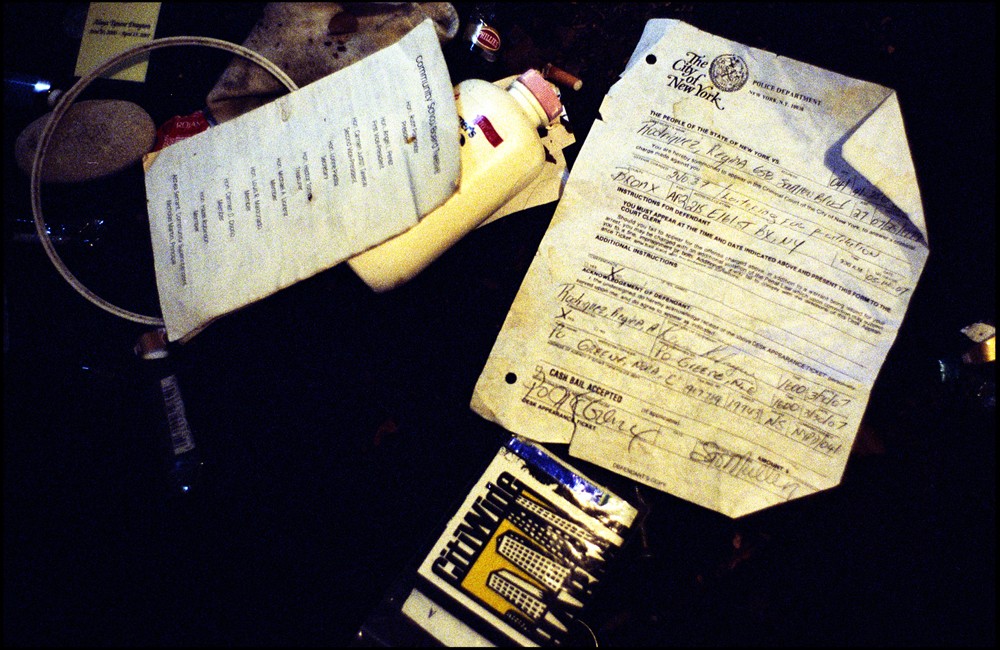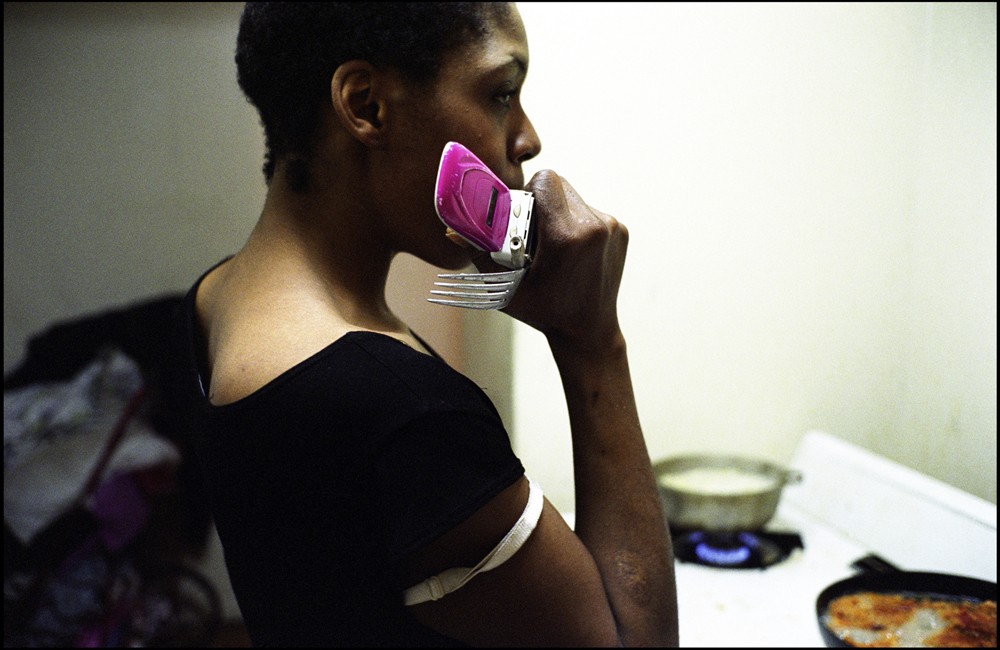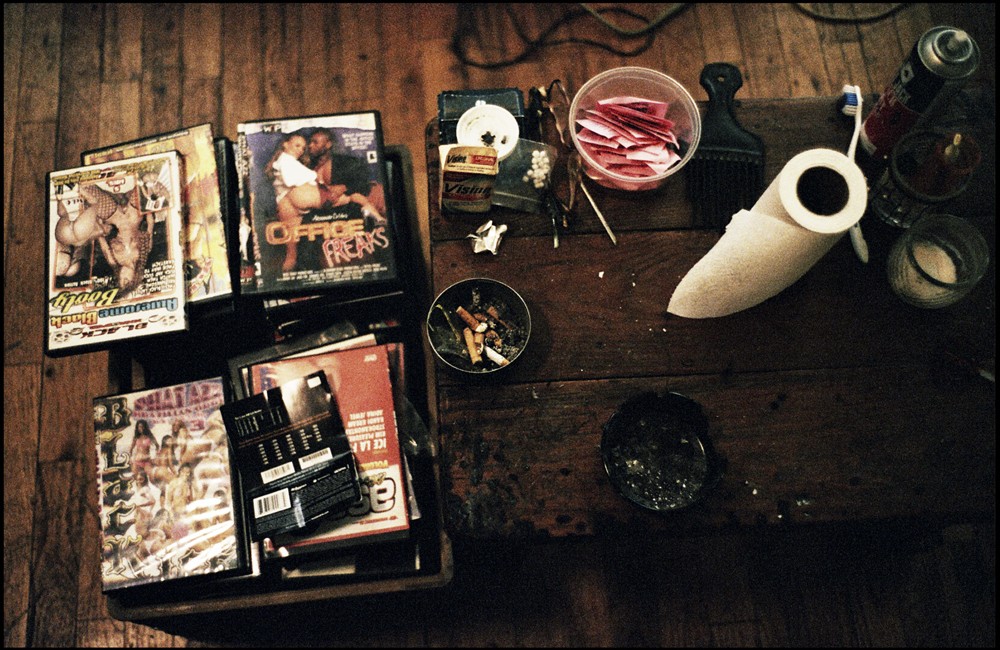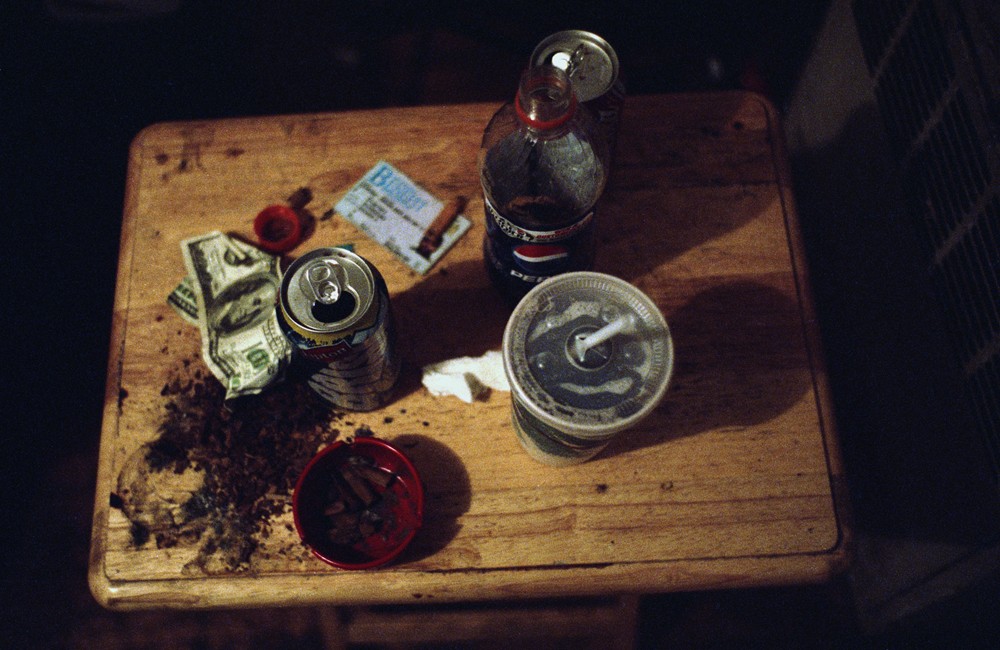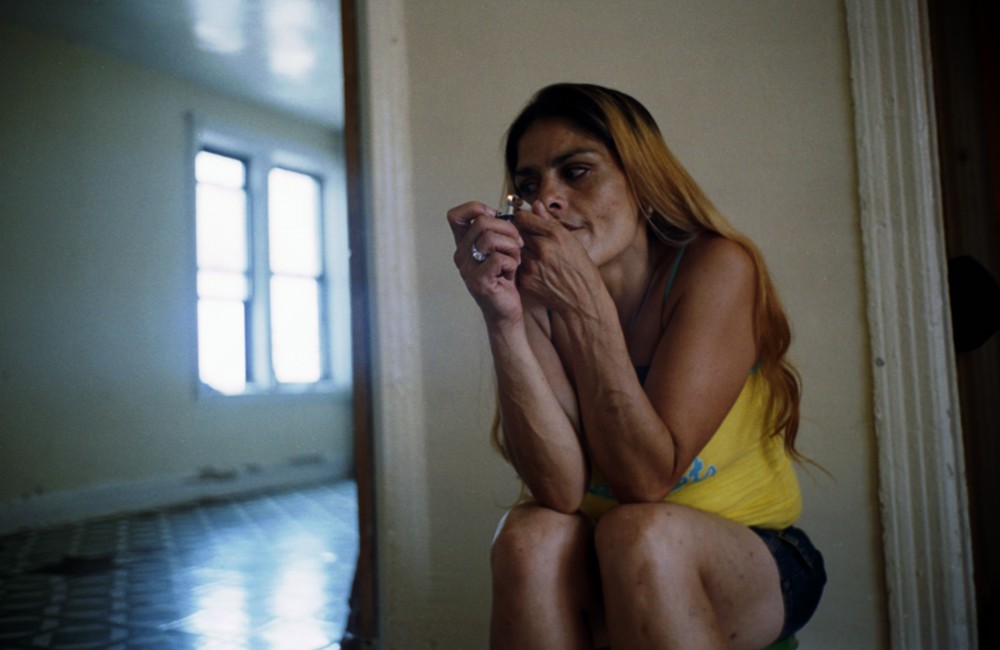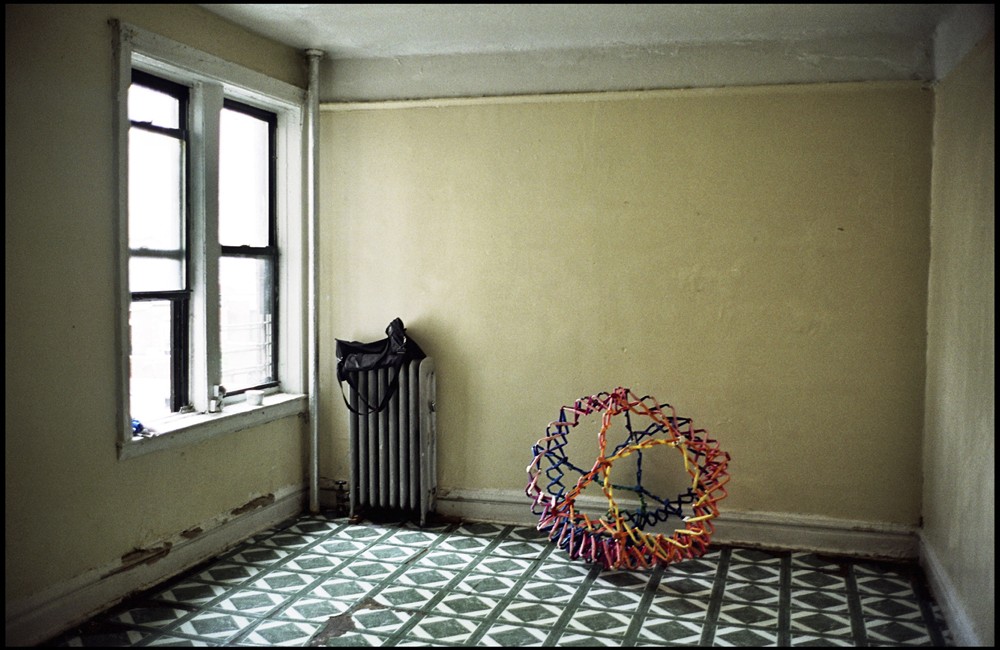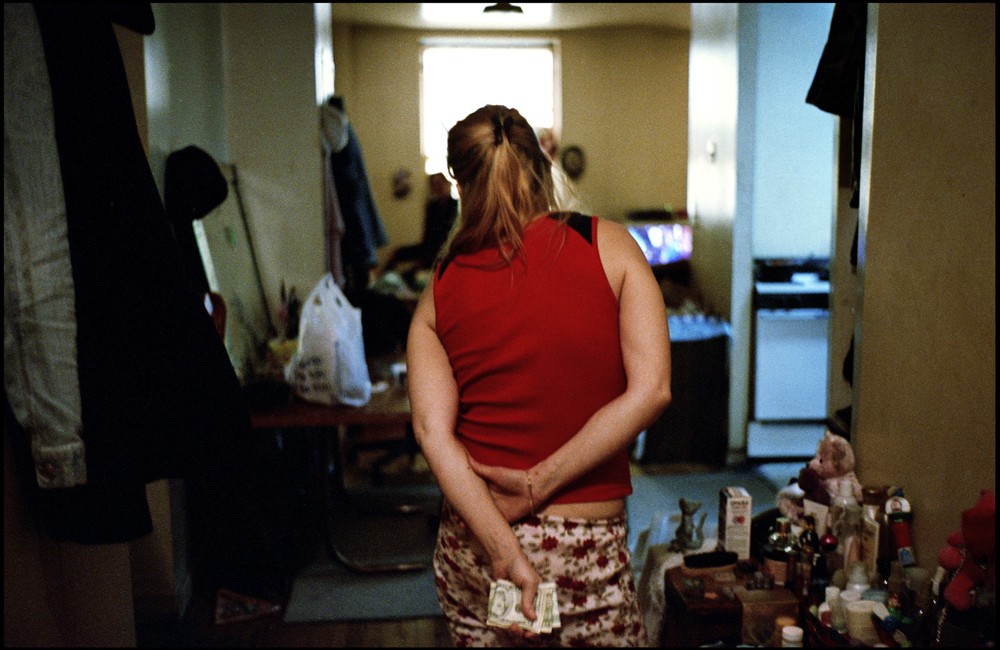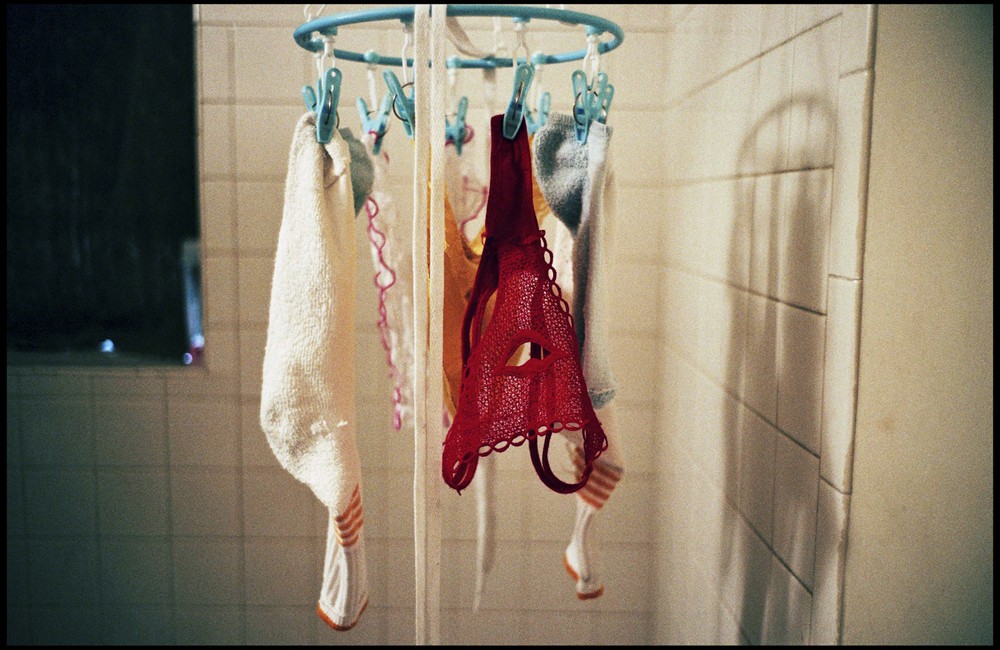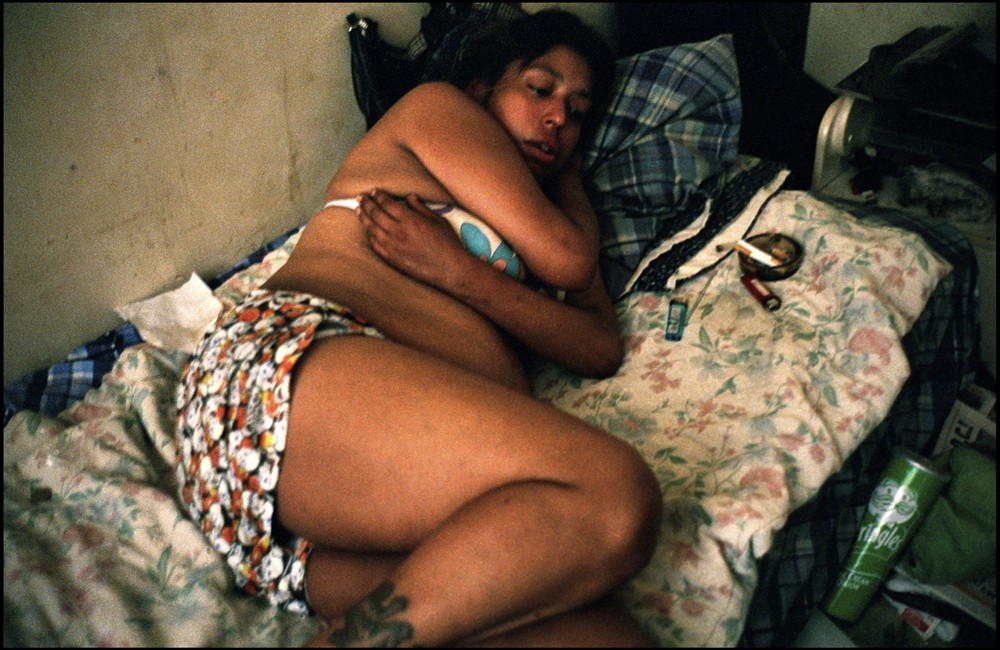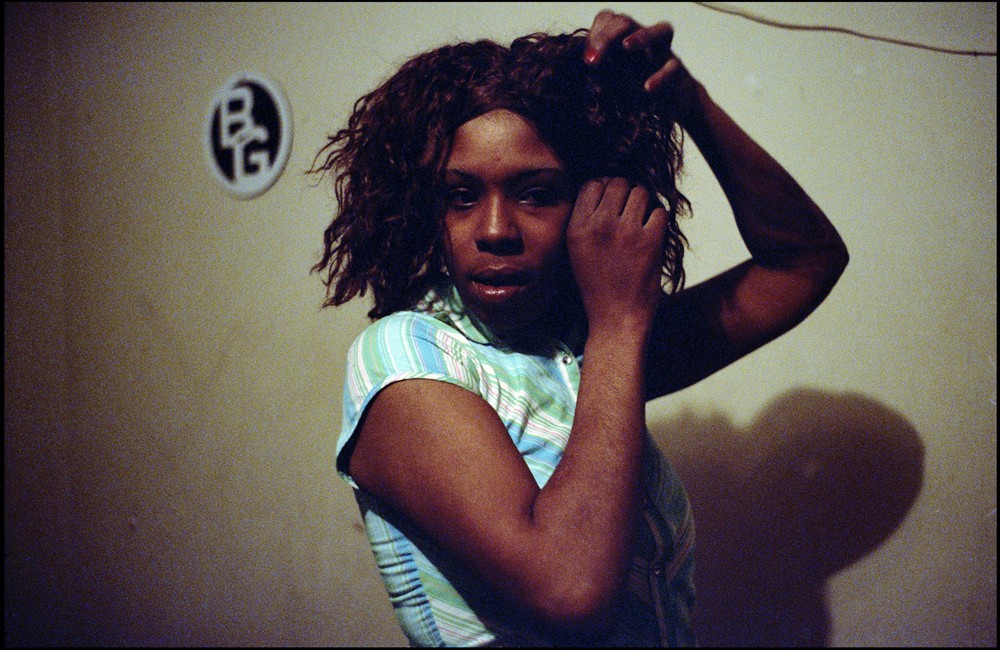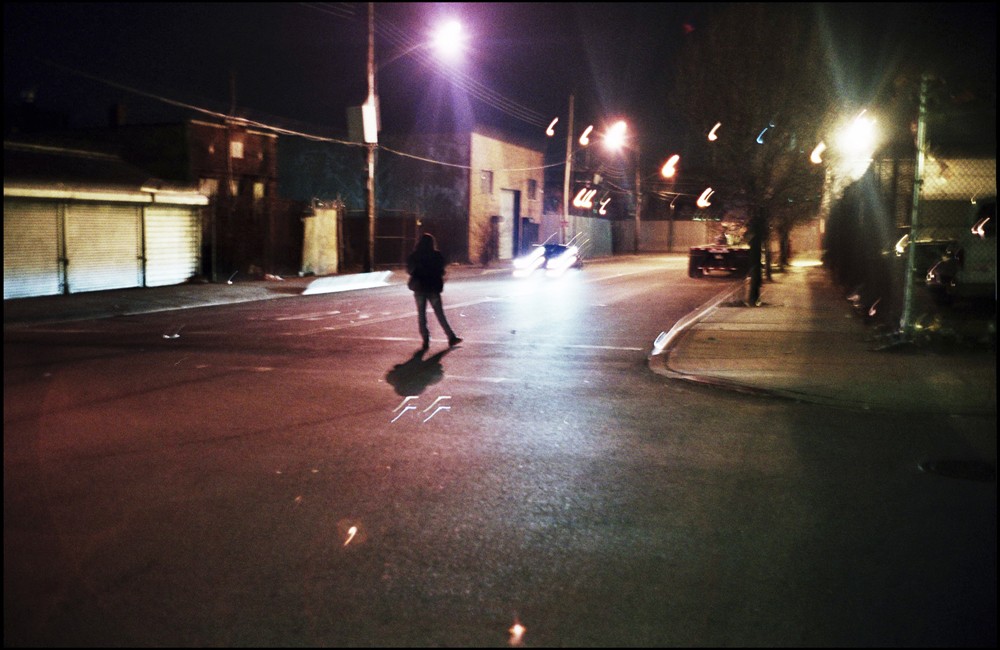I met Nina one early spring evening in 2007. She was standing on the corner by herself, wearing tight jeans and a puffy black fur jacket. I introduced myself to her and began photographing her that evening. Over the next several months, I spent many days and nights with Nina, a street-based sex worker in the desolate, industrial neighborhood of Hunts Point in the South Bronx. I photographed her in her home and in the streets where she worked. During this time I met other women working in the streets of Hunts Point, including Babygirl and Sonya. I saw how these women formed a community, often taking the place of estranged family. I saw how isolated they were from everything outside this small circle and how often they were completely alone, walking the streets day after day and night after night. It was clear how vulnerable they were to abuse and how few resources were available to them. Almost all of the women I met working in the streets of the South Bronx had been in jail numerous times and faced challenges related to drug dependency, health issues, homelessness, separation from their families, and relentless harrasment by law enforcement.
When I began making photographs in Hunts Point I wanted to make pictures that portrayed the women as the complex human beings they are and not as objects of pity or contempt. I photographed what they showed me of their lives and I tried to do so in a way that neither dramatized nor romanticized what was happening.
It was very important for me to share the work I was doing with the women I was photographing so I frequently brought prints for them. They often really liked the pictures and would frame them or make collages of them and put them up on the wall. Their responses to the photos made me feel that I was portraying them in a way they were comfortable with; that they felt I was showing them as they are.

